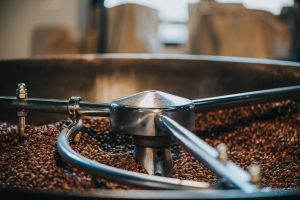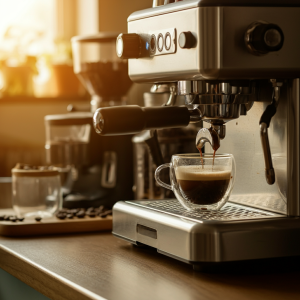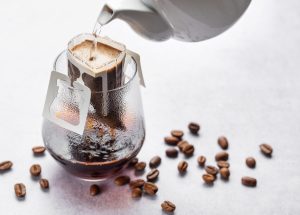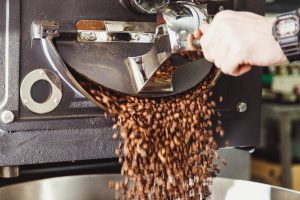
For coffee lovers, few activities feel as rewarding or enlightening as coffee cupping. Whether you’re a home barista, specialty coffee enthusiast, or café owner, coffee cupping offers a window into the world of nuanced flavors and aromas hiding in every bag of beans. It’s more than just tasting coffee—it’s an art and a science, blending sensory appreciation with technical analysis.
This guide will take you on a deep dive into everything you need to know about coffee cupping, from its origins to how you can host your own cupping sessions at home. By the end, you’ll not only understand what coffee cupping is but feel empowered to explore this exciting ritual yourself.
A Brief History of Coffee Cupping
Coffee cupping dates back to the late 19th century, when pioneering coffee merchants developed it as a way to compare the quality of different coffee beans before purchasing. The practice grew in sophistication over the decades and is now a critical part of quality control for coffee producers, roasters, and discerning retailers.
Cupping has evolved into more than just a practical evaluation tool—it’s a celebration of coffee culture. Today, specialty coffee lovers engage in cupping sessions to explore the diversity of flavors and deepen their connection to the beans they brew.
Why Coffee Cupping Matters to Specialty Coffee Lovers
Coffee isn’t just coffee—every bean is shaped by factors like origin, roast profile, altitude, and processing methods. Coffee cupping is how we unlock that story. Here’s why it resonates with coffee aficionados:
- Deeper Appreciation: Cupping helps you understand and appreciate the unique characteristics of each coffee bean.
- Better Brewing: Recognizing the nuances in flavor and aroma allows you to adjust your brewing methods for the perfect cup.
- Quality Selection: For café owners or roasters, cupping ensures you’re providing customers with exceptional coffee.
- Sense of Community: Cupping brings people together, fostering shared experiences and discussions around the flavors and stories behind the beans.
How to Conduct a Coffee Cupping Session at Home
Hosting a coffee cupping session at home is easier than it might seem. Here’s a step-by-step guide to get started:
Step 1: Gather Your Coffee and Tools
You’ll need:
- Freshly roasted whole-bean coffee (select a few different origins for variety)
- A grinder
- Hot water (just off the boil, around 200°F)
- A scale for precise measurements
- Cupping bowls or small, uniform-sized cups
- Spoons for tasting
- A timer
- Notepads to jot down flavor impressions
Step 2: Measure and Grind
Grind each coffee sample to a coarse grind, similar to what you’d use for a French press. Use 12 grams of coffee for every 200 ml (about 6.8 oz) of water.
Step 3: Smell the Dry Grounds
Place your ground coffee into separate bowls. Before adding water, inhale deeply to take in the aromas of the dry grounds. Write down your first impression—what do you smell? Chocolate? Fruit? Nuts?
Step 4: Add Hot Water and Wait
Pour hot water over the grounds in a controlled manner. Allow the coffee to steep for 4 minutes to create a crust of grounds on top.
Step 5: Break the Crust
Using a spoon, gently press through the crust to release the aromatic compounds trapped beneath. Take a moment to smell the coffee’s aroma—this step, called “breaking the crust,” reveals a whole new layer of scents.
Step 6: Taste, Evaluate, and Compare
Once cooled slightly, use a spoon to slurp the coffee loudly (yes, loudly!). This aerates the coffee, spreading it across your palate to help you detect the flavors. Compare each sample, noting differences in acidity, body, sweetness, bitterness, and aftertaste.
Understanding the Coffee Tasting Wheel
One of the best tools for enhancing your cupping skills is the Coffee Tasting Wheel. Created by the Specialty Coffee Association, the wheel breaks down flavors and aromas into categories like floral, fruity, sweet, nutty, and chocolatey.
For example:
- A fruity coffee from Ethiopia’s Yirgacheffe region might feature notes of blueberry or citrus.
- A nutty coffee from Brazil could highlight flavors like almond or hazelnut.
Using the wheel allows you to articulate and become more attuned to the diverse flavor profiles in your cup.
The Role of Cupping in Sourcing and Roasting Beans
For café owners and roasters, coffee cupping isn’t just fun—it’s an essential business tool.
- Sourcing: Cupping helps select high-quality, ethically sourced beans from trusted farmers and suppliers.
- Roasting: As roasting unlocks new flavors, cupping provides feedback on how to refine roast profiles for better results.
- Quality Control: Regular cupping ensures consistent product quality for customers.
Exploring Different Coffee Cupping Techniques
While the basic steps remain the same, you can adapt coffee cupping to suit your preferences:
- Traditional Cupping: Follow the industry-standard process outlined above.
- Blind Cupping: Use numbered cups to remove bias and focus solely on flavors.
- Themed Cupping: Play with themes like “single-origin coffees” or “beans from a specific altitude” to expand your palate.
Benefits of Participating in Coffee Cupping Events
If you want to take your cupping experience to the next level, consider attending cupping events in your area. These gatherings often feature rare, high-quality beans alongside expert-led tasting experiences. Benefits include:
- Networking: Connect with fellow coffee lovers, baristas, and industry leaders.
- Learning Opportunities: Gain deeper insight into brewing techniques, flavor profiling, and coffee sourcing.
- Exclusive Tastings: Try unique or experimental coffees that aren’t widely available.
Check out our coffee cupping schedule to join an upcoming event and share your passion for coffee.
Share Your Cupping Journey with Us
Coffee cupping offers a delightful way to savor every nuance and explore the richness of specialty coffee. Whether you’re a home barista honing your tasting skills or a café owner sourcing your next big hit, cupping is a ritual that deepens your appreciation for this beloved beverage.
What’s stopping you from discovering the hidden layers in your coffee? Grab some beans, start slurping, and see where the flavors take you. If you’re ready to take your experience further, join our coffee cupping events or share your cupping adventures with us! We’d love to hear from you.




